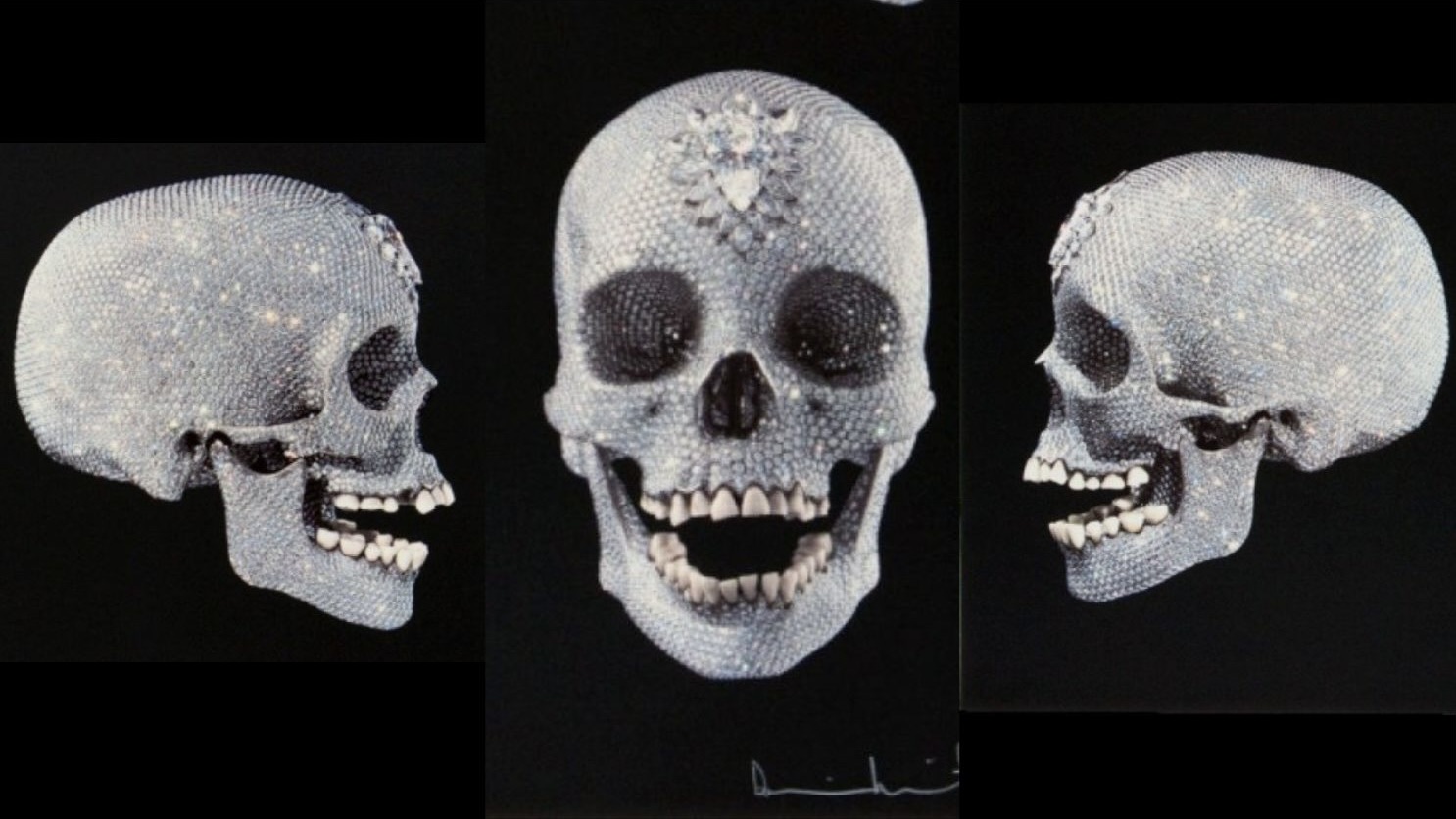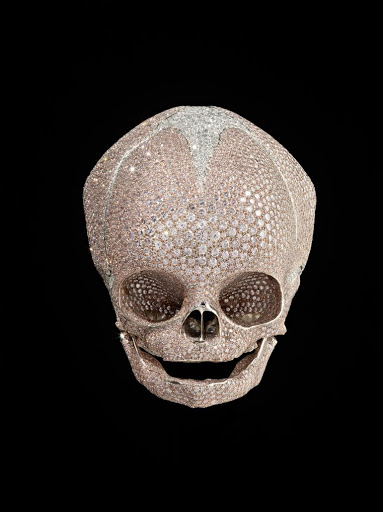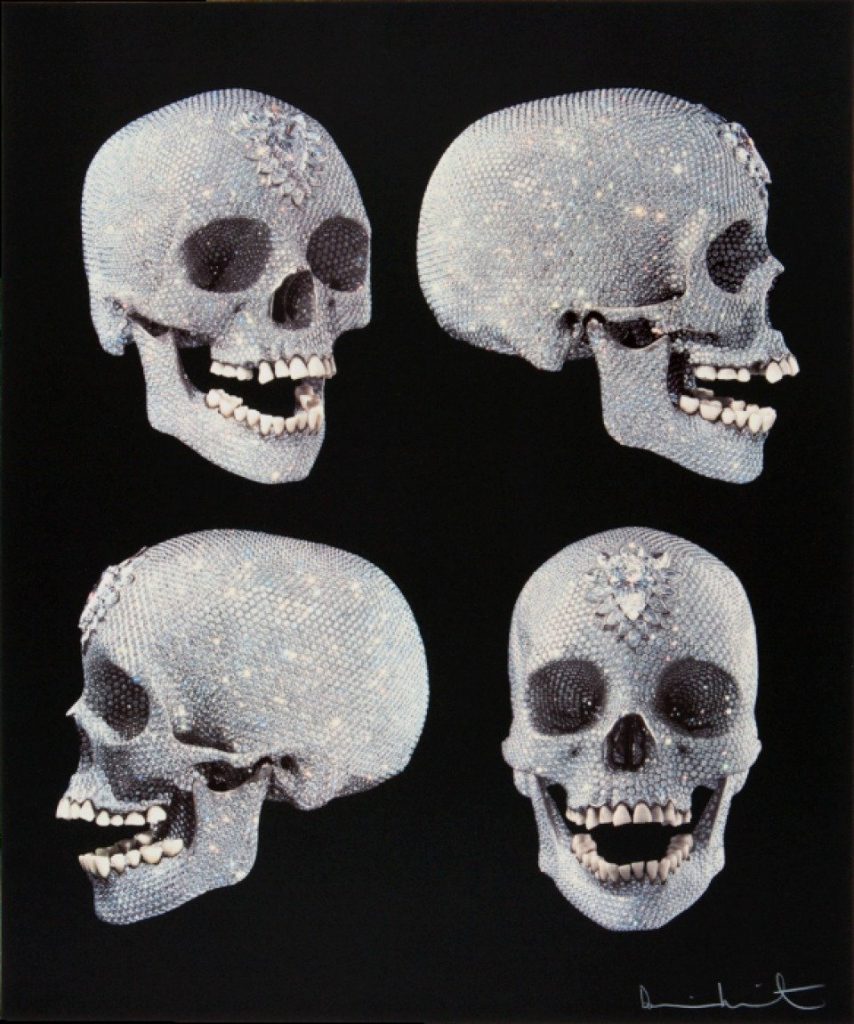Diamond Gemstones and the Art World: Access, Reputation and Power
Diamonds have long been used to suggest social standing, and in the art world the indelible Medici and incomparable Damien Hirst prove just how significant their allure can be.

Diamonds have long been used to suggest social standing, and in the art world the indelible Medici and incomparable Damien Hirst prove just how significant their allure can be. The Medici were a wealthy family of Florentine bankers who rose to power during the 15th century as they became known for international trade and funding the city’s architectural innovations and intellectual advancement. Still synonymous with art patronage today, the Medici’s supported artists such as Filippo Brunelleschi and his ingenious construction of the dome of Florence Cathedral, Leonardo di Vinci, and Michelangelo during his execution of The Last Judgment in the Sistine Chapel.

The more status the Medici gained the more significant their family jewels became. In 1533 Catherine de Medici became the Queen of France when she married Henry II and the family soon reached the apex of their pursuits. Unfortunately for Catherine, King Henry would take Diane de Poitiers as his mistress, and gift his lover with the Briolette of India, also known as the world’s oldest diamond. Upon the king’s passing, Catherine stripped the head mistress of all of her jewels and owned the Briolette for a short period of time.
During the family’s climb to the royal throne the Medici wore custom diamonds to signify themselves as elite and evoke a luxurious image of privilege and distinction. Centuries later, contemporary artist Damien Hirst—already branded as outlandish—made international headlines with his piece For the Love of God, 2007, in which he fixed 8,601 flawless diamonds onto a platinum cast human skull, and proceeded to sell the work for $100 million furthering his reputation for producing excessive and provocative artwork. The Medici and Hirst share between them their use of diamonds to cultivate an image, carry out their social agendas, and ultimately garner powerful legacies.
Diamond Gemstones of the Medici Family
Social status was ever-present in the burgeoning city of 15th century Florence, Italy. Access to diamond gemstones was granted only to a privileged few, and those among them were merchants who participated in the gemstone trade. Although the transition from a feudal system into a cash economy was imminent, laws dictating the attire of each social class were prevalent and made rising from one’s station to the next incredibly difficult. While patches and veils signified the lower marginalized classes, other legislated garments were worn by high society leaving only the aristocracy free to dress as they pleased. With the world’s fashions at their disposal the Medici distinguished themselves with a single point-cut diamond set in a gold band that was known as the Medicean diamond because only the Medici women wore it.
Unlike commoditized markets today where hundreds of identical diamond rings can be purchased from a single diamond retailer, Renaissance jewelry was custom made and unique to the individual. This means that when someone saw a Medicean diamond they automatically knew that its owner was a Medici and associated their gems with their political power. It was the family’s custom to gift a specific combination of diamonds and rubies to a Medici daughter when she married into another line symbolizing a continuation of the family’s reach. Accordingly, the same combination of jewels was given to a new bride entering into the Medici family conferring all of the influence she possessed with her new name.
Diamond Gemstones in Contemporary Art
Not unlike the difficulty of acquiring diamonds during the Renaissance, nearly anyone today would find it almost impossible to accumulate thousands of flawless diamonds, as Damien Hirst did, while making For the Love of God. Reportedly, Hirst’s diamond supplier, Bentley & Skinner, attempted to corner the diamond market in order to supply the artist with his materials, underscoring the reach and connections necessary to achieve this feat with such an incredibly rare product. Additionally, the price tag commanded by this sculpture immediately limits potential buyers to an elite few. Hirst’s audacity, however, is not uncommon among his colleagues the Young British Artists or (YBAs).
The YBA’s emerged in the late 1980s and 1990s and are known for the media coverage that tends to follow their sensationalist works and installations. Hirst is most commonly known for his ruminations on life’s ephemeral quality and the enduring fate of mortality. Coming of age in an era when virtually every material has been used, the YBAs were inheritors of an art world that saw no limits. Goldsmith’s University in London ensured that Hirst and his comrades would become insightful artists capable of communicating their most complex ideas through art. Hirst’s keen interest in science led him to work with corpses, and soon his sculptures of dead animals suspended in formaldehyde would develop the artist’s reputation for shock value.

The Medici’s Diamond Jewelry & Hirst’s Diamond Skull: What Do They Have in Common?
While preceding generations of artists pushed the limits of art to examine the world around them, artists of the 90s used the possibilities of art to explore and protest the extents to which life can be lived with freedom, civil rights, and equality. In the wake of the AIDS epidemic, art was being used to expose and illuminate the boundaries of life and death, and the voices we have in between. Hirst would find himself repeatedly drawn to themes of health and the human condition. Rather than simply depicting a person, Hirst juxtaposes a human skull and the enduring quality of diamonds to emphasize our temporality, causing viewers to confront their own existence and the inevitability of death. Such works have cemented Hirst as a provocateur within the art world and For the Love of God ensures his legacy alongside the Medici.
The Medician diamond enabled an upper-middle class family to become one of the most powerful names of the Renaissance and Hirst’s incredible multi-million-dollar sculpture continues to compel the art market’s most influential dealers and collectors. As benefactors and artists representing two side of one coin, it is diamond gemstones that the Medici and Hirst share in common. The success and glamour that diamonds represent has inspired ambitious individuals for thousands of years and will continue to inspire them for generations to come.
